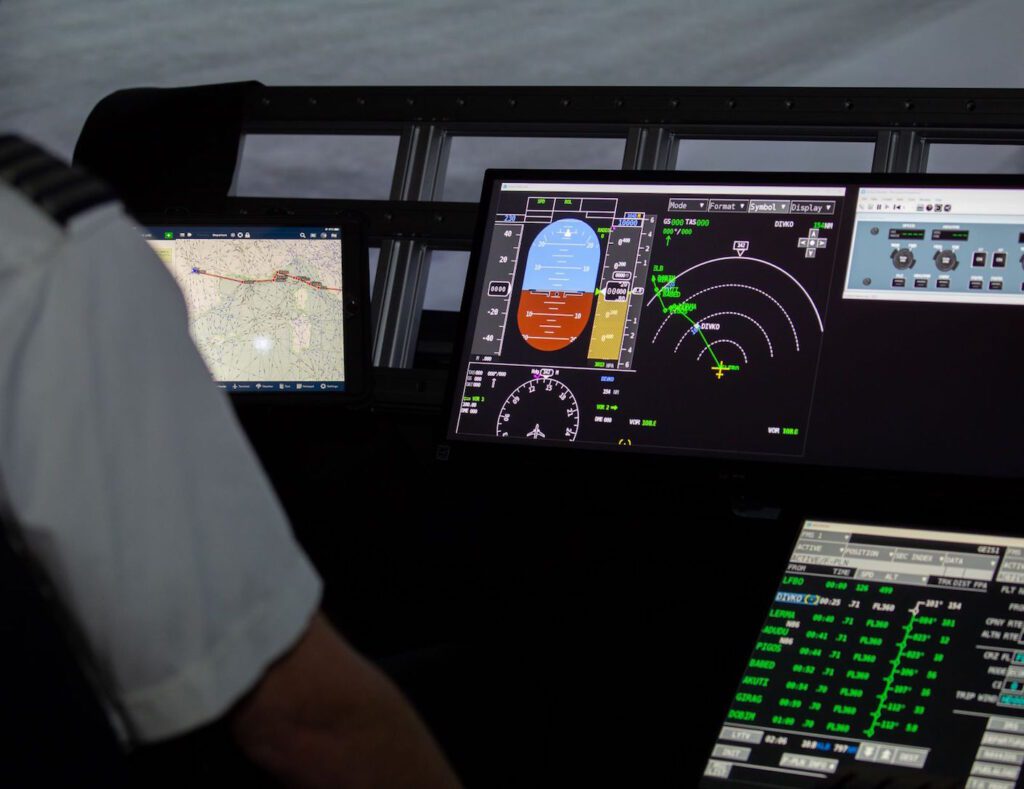GE Aviation Embracing Software Modularity in Third Generation Connected Flight Management System


GE Aviation is working on the introduction of its third generation “TrueCourse” Connected FMS software. (Photo, courtesy of GE Aviation)
GE Aviation is actively working with several unnamed commercial and military aircraft operators on the introduction of its third generation TrueCourse Connected Flight Management System (FMS) software, Avionics International learned during a recent interview with Jeremy Barbour, the company’s Connected Aircraft General Manager.
The third generation FMS is being developed with TrueCourse segmented into reusable software components and certification artifacts, making them easier to upgrade over the life cycle of the aircraft. GE Aviation’s avionics division has been working on making its FMS more software centric and connected to pilot tablet applications since 2018, when it first demonstrated an open architecture cockpit concept at the Farnborough International Air Show.
Barbour explained how GE is preparing for the first operational launch of their upgraded Connected FMS software.
“Our latest FMS product, TrueCourse, is a third generation design that applies all of the lessons learned from our prior two architectures. It is enabled by a software technology called Framework that enforces several design practices that are key to our modularity. These practices are valuable from both a design evolution and a certification standpoint as the regulatory environment continues to apply additional scrutiny on software functions,” he said.
Interviews with other GE avionics engineers in recent years have focused on the company’s goal of establishing a new a new interface to the FMS, that gives tablet electronic flight bag (EFB) applications bi-directional access to the FMS. The company has also made its Connected FMS software development kit available to third party application developers.

GE Aviation’s TrueCourse Connected FMS segments software functions into reusable components and certification artifacts, making them easier to upgrade over time. (Photo, courtesy of GE Aviation)
According to Barbour, Framework is helping to “future-proof” their FMS, making it more software-centric and capable of advanced diagnostics that identify anomalies or system errors that could occur while in-flight. The Framework software is also responsible for managing all of the static memory within the FMS, or all of the navigational data that gets stored and randomly accessed by the FMS in response to pilot inputs.
Management of that static memory within the FMS is critical to enabling GE’s third generation connected FMS concept, as it allows two key elements, Barbour said. “Any data point managed by Framework can be exposed to external systems via our Connected FMS technology. If data is the new oil, TrueCourse, enabled by Framework, is an fantastic asset. Anything the pilot could do through the FMS user interface in the cockpit can be accomplished through the Connected FMS tablet interface programmatically. This provides the ultimate capability for future autonomy needs. When we say the design is future proof – we mean it.”
More than 14,000 in-service commercial and military aircraft feature GE Aviation’s FMS software, including the Airbus A320 and A330, all Boeing 737 variants and the KC-46. TrueCourse is one of several flight management systems that are being modified with connectivity links and interfaces that connect tablet EFB devices to an aircraft’s databus network. Universal Avionics, Thales, and Honeywell Aerospace are among the other avionics makers that currently have their own flavors of cloud native and connected FMS technologies in development or ready for launch.
Barbour said that their connected FMS has not been used on any in-service commercial aircraft yet, however, the company is actively working with an unnamed airline on its eventual commercial launch, and has several military aircraft users are trailing the upgrade as well. One Connected FMS application that Barbour has found interest in from his discussions with airline pilots is dynamic re-routing.
“Dynamic re-routing occurs when a pilot learns something about their current route that they did not know when they planned flight. That could be weather, turbulence or even traffic flow management at the destination airport. Updating time of arrival, navigating around winds, chasing a tail wind in order to increase fuel efficiency at different altitude, we see a lot of opportunities for the Connected FMS to make better use of that information. Modifying the flight plan on the FMS today is an extremely manual process, and the Connected FMS could automate a lot of those tasks,” Barbour said.
GE currently does not have a targeted date on when the first True Course Connected FMS software will start flying, however, Barbour said their focus right now is on incorporating feedback they have received on how to optimize the EFB-FMS application data exchange and integration.
The post GE Aviation Embracing Software Modularity in Third Generation Connected Flight Management System appeared first on Aviation Today.
—————
Boost Internet Speed–
Free Business Hosting–
Free Email Account–
Dropcatch–
Free Secure Email–
Secure Email–
Cheap VOIP Calls–
Free Hosting–
Boost Inflight Wifi–
Premium Domains–
Free Domains





